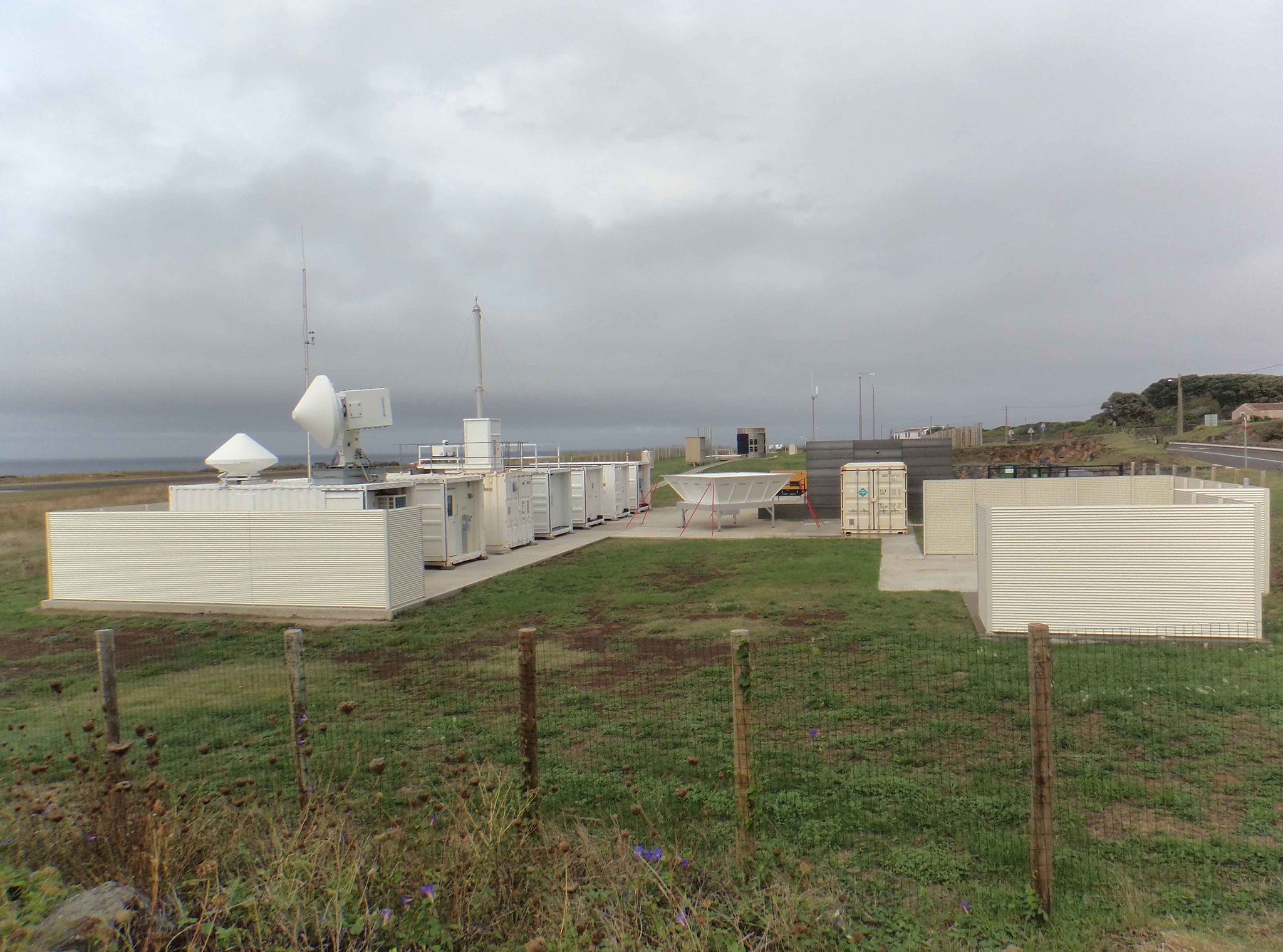Aerosol-cloud interactions in the eastern North Atlantic
Submitter
Ghate, Virendra Prakash
— Argonne National Laboratory
Area of Research
Aerosol Processes
Journal Reference
Ghate V, T Surleta, L Magaritz‐Ronen, S Raveh‐Rubin, F Gallo, A Carlton, and E Azevedo. 2023. "Drivers of Cloud Condensation Nuclei in the Eastern North Atlantic as Observed at the ARM Site." Journal of Geophysical Research: Atmospheres, 128(22), e2023JD038636, 10.1029/2023JD038636.
Science

Instrumentation at the ARM ENA site with overcast clouds and ocean in the background. Image courtesy of ARM facility.
Water vapor condenses to form cloud droplets on aerosols, small particles or droplets suspended in the air that are commonly called cloud condensation nuclei (CCN). The mechanisms responsible for changes in CCN concentrations over the open oceans are not fully known. The study characterizes drivers of CCN concentrations over the eastern North Atlantic region. CCN can be locally produced through wave-breaking, transported to or away from the location, removed from the atmosphere as they transition into cloud drops, or scavenged by falling rain drops. Causes of seasonal and sub-monthly changes in these CCN concentrations are examined based on the long-term data collected by the U.S. Department of Energy (DOE) Office of Science's Atmospheric Radiation Measurement (ARM) user facility.
Impact
Accurate representation of the two-way interactions between aerosol and clouds in Earth system models (ESMs) is crucial to predicting the future climate. Very few studies have characterized aerosol-cloud interactions pertaining to marine low clouds using long-term observations. This observational-based analysis uses data collected over seven years over the remote eastern North Atlantic Ocean to characterize controls of CCN in the region. The analysis shows substantial impact of clouds and rain on CCN concentration at the site and upwind of it. This adjusted CCN concentrations on seasonal and daily timescales. Overall, analysis shows a substantial impact of clouds and drizzle on CCN population in the region that is currently not well represented in ESMs.
Summary
Seven years of data collected at ARM’s Eastern North Atlantic (ENA) site are analyzed to characterize the variability of CCN concentrations in the region. Analysis shows that the cloud and aerosol measurements were affected by local effects during certain wind conditions. Data not affected by local effects suggested a strong seasonal cycle of CCN concentrations with high values during summer months and low values during winter months. CCN budget analysis revealed that the changes in the CCN concentrations are largely governed by transport of CCN to the site, and their removal by cloud and rain drops. Further analysis of high- and low-CCN events suggested the air parcels containing low CCN concentrations to have higher cloudiness, stronger rain rates, and higher boundary-layer heights as compared to the high-CCN events. The strong impact of clouds and rain on aerosols provide key constraints for model evaluation and climatological studies in the region.
Keep up with the Atmospheric Observer
Updates on ARM news, events, and opportunities delivered to your inbox
ARM User Profile
ARM welcomes users from all institutions and nations. A free ARM user account is needed to access ARM data.


















